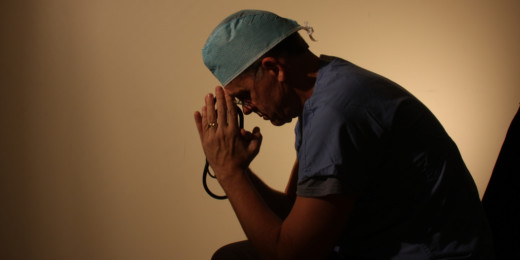A couple of months ago, I was waiting for a class to begin when I overheard a PhD student speak tearfully on the phone. They talked about how their research was going poorly and that they felt as if they were set up for failure. They had already talked with the campus psychologist, but it was difficult to extricate the perception of their self-worth from the progress of their project, since the project would ultimately determine the duration of their PhD, their grant applications, and career opportunities.
A few weeks later, in a moment of serendipity, my college friend Erik Faber messaged me with an idea for an article. He knew that I write regularly about the culture of medical school and medicine and, as an MD-PhD candidate at the University of Minnesota, he wanted to work on such a piece for the scientific community.
We had previously discussed the fact that both medicine and scientific academia had a burnout problem. Smart, ambitious, and self-motivated college graduates entered into both fields bursting with enthusiasm, but the vicissitudes of the training process and the structural challenges of the work itself diminished the joy that they originally held.
A 2011 survey of graduate students at 26 U.S. universities found that 37% of graduate students in the natural sciences reported experiencing "a bit more" or "a lot more" stress than they felt able to handle. And stress, we know, can decrease creativity -- a key ingredient in a scientific career.
Still, medicine seemed to be aware of its own burnout problem and was taking steps to address it. Numerous studies were being published on physician mental health, more and more physicians were speaking and writing about their own experiences with stress, and schools were more careful to address the mental health of their trainees. Of course, there was still a long way to go, but it was a start.
However, we hadn't noted a comparable movement in the scientific academic community, and we wondered why. Perhaps academic bioscience, as a vast endeavor with countless of branches and subspecializations, was too fragmented to unite and mobilize for the well-being of its trainees and scientists. Perhaps scientists were more reluctant to speak out, for a number of reasons including job security.
Unlike Erik, I am not an MD-PhD candidate, but I have conducted basic science research for several years, so I am familiar with the culture of science. Moreover, I could contribute my knowledge on medical trainee wellness that I had already collected for my writing and my work on various student advisory boards.
What I thought would be a short opinion piece turned into long and fruitful conversations with students in other institutions, a deep dive into the wellness literature, talks with leaders on the topic, and reflections on Stanford University's own approach to wellness for its medical students. We crystallized our thoughts into a piece that appeared last week as a career column in Nature.
We focused specifically on small changes that graduate programs could implement to reduce trainee burnout. We proposed that programs:
- Enable time away from the lab -- such as by offering protected days off for trainee health
- Reward progress and the work -- graduate students are intrinsically motivated but their efforts (and even setbacks) should be validated and acknowledged
- Connect graduate students with the public to help them communicate their research and to inform the public about the importance of their work
- Expose students to non-academic career opportunities
- Promote research into student and trainee wellness
These suggestions are not universal or one size fits all, and my greatest hope for our article is that it will contribute to the ongoing discussions about wellness in higher education.
Both medicine and scientific academia have a long way to go in order to improve trainee and practitioner health, but our hope is that they will be able to learn from and build upon each other.
Yoo Jung Kim is a fourth-year Stanford medical student and the co-author of What Every Science Student Should Know, a guide for aspiring college STEM students. She also writes for Doximity and U.S. News and World Report.
Photo by Josh Rocklage






